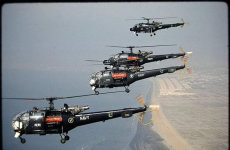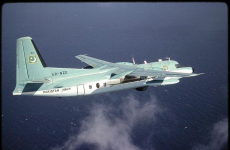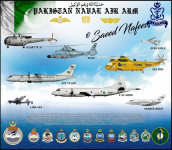ghazi52
Think Tank Analyst
- Mar 21, 2007
- 116,854
- 167,084
- Country of Origin

- Country of Residence

- Thread starter
- #31
OPERATION DWARKA
Operation Dwarka is one of the most significant events of 1965 Indo-Pak war which reflected courage, determination, professional competence, dedication and coordination of the PN personnel involved in it. The objectives of this operation were:
a. To draw the heavy enemy units out of Bombay for the submarine GHAZI to attack
b. To destroy the radar installation at Dwarka
c. To lower Indian morale
d. To divert Indian Air effort away from the north
On 7 September 1965 when the ships were on their normal war patrol, the following signal was received from Naval Headquarters:
"Task group comprising PNS BABUR, PNS KHAIBAR, PNS BADR, PNS JAHANGIR, PNS ALAMGIR, PNS SHAHJAHAN and PNS TIPU SULTAN is to be in position 239 degrees – 120 miles from Dwarka light house by 071800 E Sep with maximum power available. Task group thereafter to carryout bombardment of Dwarka about midnight using 50 rounds per ship. Force is to retire from bombardment area by 080030 E Sep and return to present patrol area at full speed. One or two enemy frigates may be expected to encounter in the area in addition to enemy air threat"
The Commodore Commanding PN Flotilla accordingly originated his signal at 1835, the salient features of which were:
a. The initial position for attack was 206 degrees Dwarka light 6 miles
b. The target was to be city installations and conspicuous chimney
c. Complete radio silence was to be maintained except for guarding air warning radar.
The Fleet immediately topped up fuel and shaped course for Dwarka operation. At midnight the ships were on Initial Position (IP) with all their guns loaded and the men ready to strike a historic punch on enemy's face. The city of Dwarka was completely blacked out and target could only be identified on radar.
At 0024 bombardment was ordered to commence when ships were 5.5 to 6.3 miles from Dwarka light. It took only four minutes to complete the bombardment, firing altogether about 350 rounds on the target. Upon successful completion of the attack the ships retired immediately without any loss or damages. There was no considerable resistance from the enemy and the ships safely arrived at their patrol area by 0635 on 8 Sep.
Operation Dwarka is one of the most significant events of 1965 Indo-Pak war which reflected courage, determination, professional competence, dedication and coordination of the PN personnel involved in it. The objectives of this operation were:
a. To draw the heavy enemy units out of Bombay for the submarine GHAZI to attack
b. To destroy the radar installation at Dwarka
c. To lower Indian morale
d. To divert Indian Air effort away from the north
On 7 September 1965 when the ships were on their normal war patrol, the following signal was received from Naval Headquarters:
"Task group comprising PNS BABUR, PNS KHAIBAR, PNS BADR, PNS JAHANGIR, PNS ALAMGIR, PNS SHAHJAHAN and PNS TIPU SULTAN is to be in position 239 degrees – 120 miles from Dwarka light house by 071800 E Sep with maximum power available. Task group thereafter to carryout bombardment of Dwarka about midnight using 50 rounds per ship. Force is to retire from bombardment area by 080030 E Sep and return to present patrol area at full speed. One or two enemy frigates may be expected to encounter in the area in addition to enemy air threat"
The Commodore Commanding PN Flotilla accordingly originated his signal at 1835, the salient features of which were:
a. The initial position for attack was 206 degrees Dwarka light 6 miles
b. The target was to be city installations and conspicuous chimney
c. Complete radio silence was to be maintained except for guarding air warning radar.
The Fleet immediately topped up fuel and shaped course for Dwarka operation. At midnight the ships were on Initial Position (IP) with all their guns loaded and the men ready to strike a historic punch on enemy's face. The city of Dwarka was completely blacked out and target could only be identified on radar.
At 0024 bombardment was ordered to commence when ships were 5.5 to 6.3 miles from Dwarka light. It took only four minutes to complete the bombardment, firing altogether about 350 rounds on the target. Upon successful completion of the attack the ships retired immediately without any loss or damages. There was no considerable resistance from the enemy and the ships safely arrived at their patrol area by 0635 on 8 Sep.












